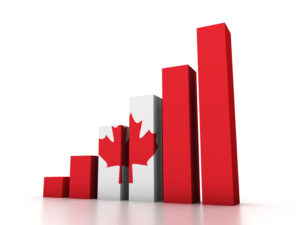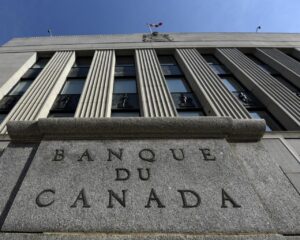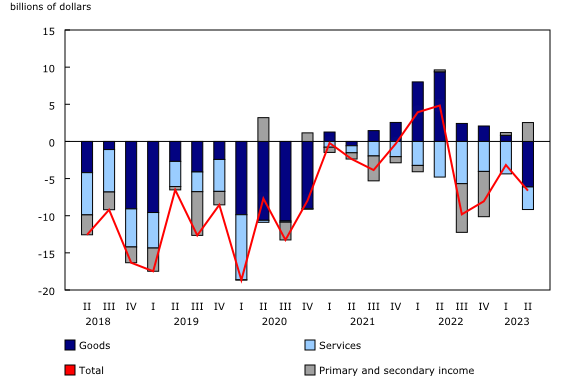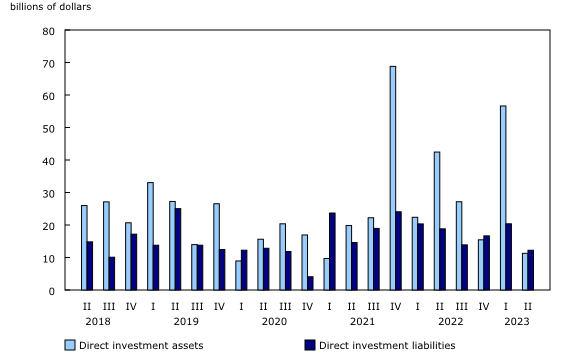The economic account of a country determines its micro and macro-economic policies to a large extent. There are certain factors that comprise the economic accounts. We will delve into these factors and the outlook for the Canadian economy does not paint a promising picture.
The Balance of Payments Outlook
Canada’s current account deficit (on a seasonally adjusted basis) widened by $3.5 billion to $6.6 billion in the second quarter. The trade-in goods balance moved into a deficit position for the first time in two years, mostly as a result of lower exports of energy products and farm, fishing, and food products. In contrast, movements in the trade in services and investment income balances moderated the overall increase in the current account deficit.

In the financial account (unadjusted for seasonal variation), inflows of funds from abroad to finance the current account deficit came primarily from foreign investment in Canadian debt securities, as non-residents significantly increased their holdings of federal government instruments in the quarter. Meanwhile, both Canadian direct investment abroad and foreign direct investment in Canada slowed to their lowest levels in more than two years.
Current account
First trade in goods deficit in two years
The trade-in goods balance posted a $6.1 billion deficit in the second quarter, down from a surplus of $0.8 billion in the first quarter. This was the first deficit since the second quarter of 2021.
Exports of goods were down 3.9% to $185.9 billion in the second quarter of 2023, with most product sections posting declines. Exports of energy products fell $4.6 billion as prices continued their downward trend. Exports of farm, fishing, and food products fell $3.4 billion mainly because of lower exports of wheat and canola, as improving global supplies impacted prices and demand for Canadian exports. Motor vehicles and parts moderated the overall decrease in exports, reaching their highest level since the first quarter of 2016.
Imports of goods edged down 0.3% to $192.0 billion in the second quarter of 2023. As was the case for exports, energy products contributed the most to the overall decline in imports, moderated by an increase in imports of motor vehicles and parts to a record high in the quarter.
The trade-in services deficit narrows
The trade-in services deficit narrowed by $1.3 billion to $3.0 billion in the second quarter. The travel balance went from a deficit of $0.8 billion in the first quarter to a surplus of $0.2 billion in the second quarter. Imports of travel services declined as expenditures by Canadians travelling overnight to the United States fell, which more than offset a slight increase in the expenditures of Canadians travelling to foreign destinations other than the United States in the second quarter.
The commercial services surplus increased for a third consecutive quarter, reaching $0.8 billion in the second quarter. Commercial services exports rose 3.4% to $29.4 billion, led by higher receipts of management services. Imports were up 2.1% to $28.6 billion in the second quarter as higher payments of royalties, management services, and computer services were partially offset by lower payments of repair services.
Higher investment income surplus
The investment income surplus rose $2.2 billion to $4.7 billion in the second quarter. Income generated on loans and deposits continued its increase which started more than a year ago, with receipts up by more than payments in the second quarter. Interest received on foreign loans and deposits increased $5.3 billion, while interest paid on similar instruments held by non-residents in Canada was up $2.3 billion. Meanwhile, both profits earned by Canadian direct investors abroad and foreign direct investors in Canada went down during the quarter.
Financial account
Foreign investment in Canadian debt securities rises
Foreign investors acquired $54.7 billion in Canadian debt securities in the second quarter, following an $8.4 billion investment in the first quarter. Non-resident investors increased their exposure to both Canadian bonds and money market instruments in the second quarter but withdrew $18.2 billion of funds from the Canadian equity market. This activity followed a divestment of $17.3 billion in Canadian equities in the first quarter.
On the other side of the ledger, Canadian investors acquired $14.6 billion of foreign securities in the second quarter, after a divestment of $23.4 billion in the first quarter. In the second quarter, acquisitions were mainly in the form of foreign debt securities (+$11.5 billion) and, to a lesser extent, foreign equity securities (+$3.1 billion).
Direct investment activity slows considerably
Foreign direct investment in Canada amounted to $12.2 billion in the second quarter, the lowest level since the fourth quarter of 2020. Equity investments made by foreign parents into their Canadian affiliates, mainly in the form of reinvested earnings, accounted for most of the activity. Merger and acquisition activity totalled $3.9 billion in the second quarter, down from $9.2 billion in the first quarter. The manufacturing sector was the largest recipient of foreign direct investment in the second quarter. On a country basis, more than half of the investment originated from the United States.
Direct investment abroad slowed to $11.3 billion in the second quarter, after surging to $56.6 billion in the first quarter. This was the lowest level of investment since the first quarter of 2021. Earnings reinvested by Canadian parent companies into their foreign affiliates led the activity in the second quarter of 2023. Meanwhile, merger and acquisition activity slowed to $4.3 billion, down from $41.0 billion in the first quarter. In the second quarter, the largest share of the investment abroad was in affiliates of Canadian energy and mining firms.

Note to readers
The balance of international payments covers all economic transactions between Canadian residents and non-residents in three accounts: the current account, the capital account and the financial account.
The current account covers transactions in goods, services, compensation of employees, investment income and secondary income (current transfers).
The capital account covers capital transfers and transactions in non-produced, non-financial assets.
The financial account covers transactions in financial assets and liabilities.
In principle, a net lending (+) or net borrowing (-) derived from the sum of the current and capital accounts corresponds to a net lending (+) or net borrowing (-) derived from the financial account. In practice, as data are compiled from multiple sources, this is rarely the case and gives rise to measurement error. The discrepancy (net errors and omissions) is the unobserved net inflow or outflow.
Foreign direct investment is presented on an asset-liability principle basis (that is, gross basis) in the financial account. Foreign direct investment can also be presented on a directional principle basis (that is net basis), as shown in supplementary foreign direct investment tables 36-10-0025-01, 36-10-0026-01, 36-10-0473-01 and 36-10-0656-01. The difference between the two foreign direct investment conceptual presentations resides in the classification of reverse investment such as (1) Canadian affiliates’ claims on foreign parents and (2) Canadian parents’ liabilities to foreign affiliates. Under the asset-liability presentation, (1) is classified as an asset and included in direct investment assets, also referred to as direct investment abroad in this text, and (2) is classified as a liability and included in direct investment liability, also referred to as direct investment in Canada in this text.






